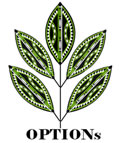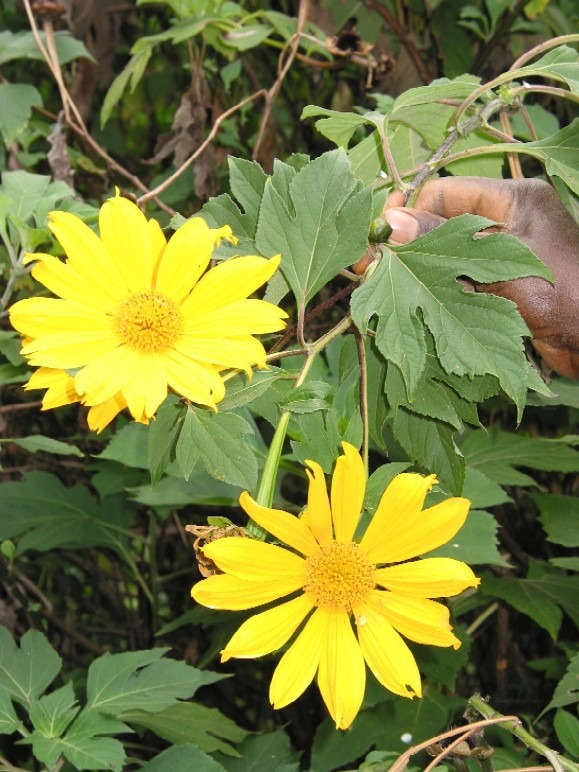Fact sheet about Tithonia diversifolia
Distribution and habitat
It is a common shrub on field boundaries, grasslands and disturbed lands in East Africa. Initially introduced into Kenya, where it is exotic, from Central America as an ornamental plant, it is now found in Western and Central provinces, in coastal regions and parts of the Rift Valley. It grows in regions of 550-1950m altitude and mean annual temperature of 15-310C and mean annual rainfall of 100-2000mm.
Flowering and fruiting habits
It is a woody herb to succulent shrub up to 3 m tall. Opposite leaves, attenuate base, acute apex, crenate margin, up to 17 x 12 cm, densely pubescent beneath, palmate venation. Flowers are yellow. Flower heads solitary on a peduncle 6-13 cm long. Each mature stem may bear several flowers. The plant flowers and produces seeds all year round.
Uses other than pesticidal
Medicinal: Infusion of T. diversifolia is suitable for constipation,
stomach pains, indigestion, sore throat, liver pains and treating malaria.
The plant also exerts anti-inflammatory, analgesic, antimalarial, antiviral,
antidiabetic, antidiarrheal, antimicrobial, antispasmodic, vaso-relaxant
and cancer-chemo preventive properties/effects.
Fodder: Leaves, soft branches, and flowers are used as fodder due to
its high nutritive-quality index.
Fuel: Farmers use T. diversifolia for firewood
Propagation and cultivation
T. diversifolia can be propagated from seeds and cuttings. Seeds germinate readily when sown fresh, without treatment, all year round. Seeds are sprinkled directly on soil or covered with soil. Stem cuttings of 20 to 40 cm length establish readily. The cuttings should be planted into moist soil immediately after collection and not allowed to dry in the sun.
Seed collection & Storage
The dried fruits are sieved to remove the husks, to obtain seeds
Seed storage behaviour is orthodox, therefore amenable to long-term cold storage
Parts used
Leaves
Preparation
Petroleum or water extracts of dried, ground leaves
Uses
Surface application
Target organisms
Against plant pathogenic fungi and broad range of insects

